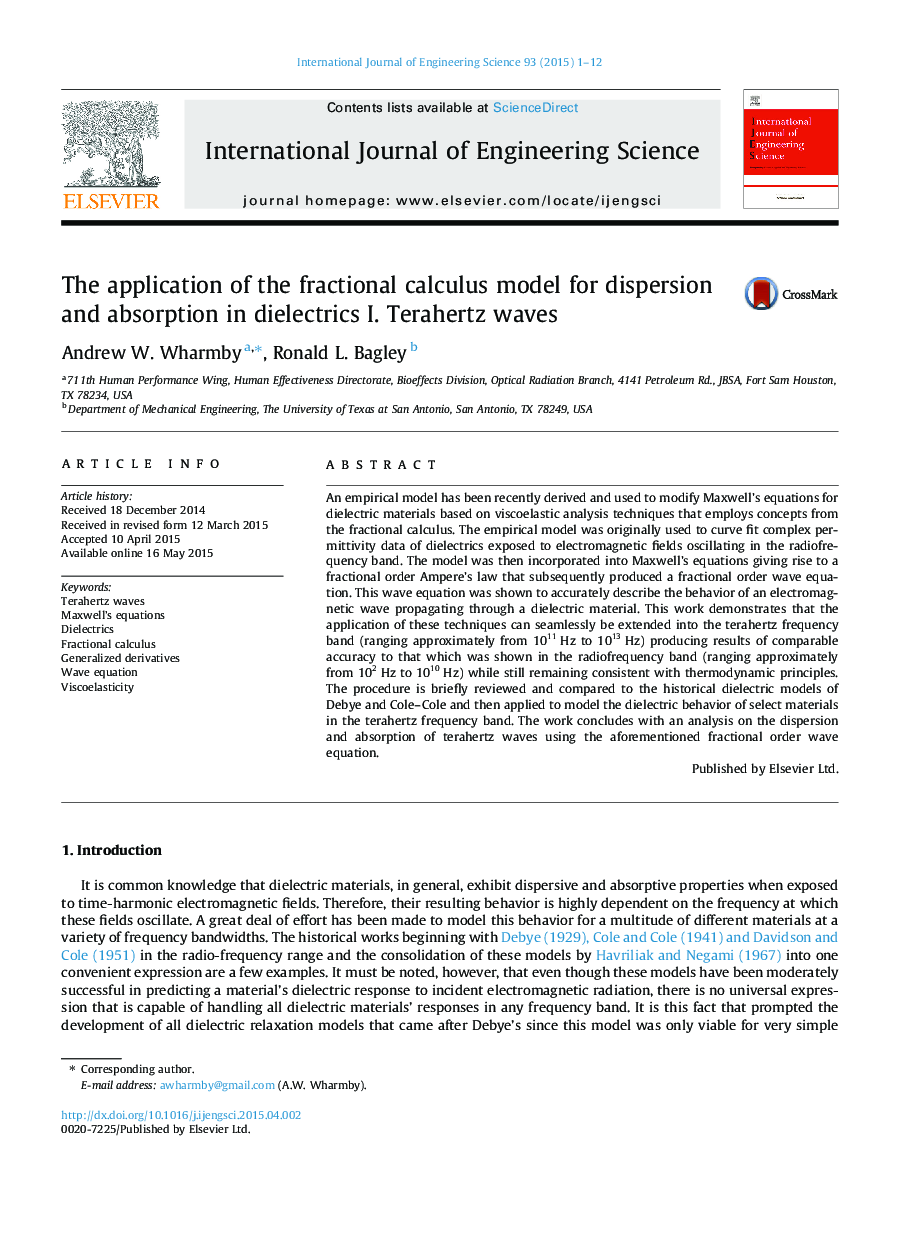| Article ID | Journal | Published Year | Pages | File Type |
|---|---|---|---|---|
| 824767 | International Journal of Engineering Science | 2015 | 12 Pages |
An empirical model has been recently derived and used to modify Maxwell’s equations for dielectric materials based on viscoelastic analysis techniques that employs concepts from the fractional calculus. The empirical model was originally used to curve fit complex permittivity data of dielectrics exposed to electromagnetic fields oscillating in the radiofrequency band. The model was then incorporated into Maxwell’s equations giving rise to a fractional order Ampere’s law that subsequently produced a fractional order wave equation. This wave equation was shown to accurately describe the behavior of an electromagnetic wave propagating through a dielectric material. This work demonstrates that the application of these techniques can seamlessly be extended into the terahertz frequency band (ranging approximately from 10111011 Hz to 10131013 Hz) producing results of comparable accuracy to that which was shown in the radiofrequency band (ranging approximately from 102102 Hz to 10101010 Hz) while still remaining consistent with thermodynamic principles. The procedure is briefly reviewed and compared to the historical dielectric models of Debye and Cole–Cole and then applied to model the dielectric behavior of select materials in the terahertz frequency band. The work concludes with an analysis on the dispersion and absorption of terahertz waves using the aforementioned fractional order wave equation.
